Tampoco sé a quién va dirigida, parece que pone "Reg" o algo así.



 Esta foto la he tomado del documental "The Hidden Star". Aparecen los tres hermanos Clift esquiando en Europa. Monty es el que está a la derecha mirando al suelo.
Esta foto la he tomado del documental "The Hidden Star". Aparecen los tres hermanos Clift esquiando en Europa. Monty es el que está a la derecha mirando al suelo.

"Monty se reiría del hecho de que esté furioso contra él porque ya no me envía ninguna caja de Poully-Fuissé por mi cumpleaños".
Tiene un retrato de Montgomery Clift que sí me parece interesante frente al resto de coloridas y repetitivas imágenes. Está basado en esta escena de The young Lions.
Datos de la obra:
Titled: High Class LoserMontgomery Clift
Water Based Gouache on Fashion Plate Board
Large 20 x 30 inches Completed in October 1988. £1750
Contents |
The future actor's mother, who was reportedly adopted at the age of one year, nicknamed "Sunny", spent part of her life and her husband's money seeking to establish the Southern lineage that reportedly had been revealed to her at age 18 by the physician who delivered her, Dr. Edward Montgomery, after whom she named her younger son. According to Clift biographer Patricia Bosworth, Ethel was the illegitimate daughter of Woodbury Blair and Maria Anderson, whose marriage had been annulled before her birth and subsequent adoption. This would make her a granddaughter of Montgomery Blair, Postmaster General under President Abraham Lincoln, and a great-granddaughter of Francis Preston Blair, a journalist and adviser to President Andrew Jackson, and Levi Woodbury, an Associate Justice of the Supreme Court. None of these relationships, however, has been proven and remain speculative in the absence of documentation.
As part of Sunny Clift's lifelong preparation for acceptance by her reported biological family (a goal never fully achieved), she raised Clift and his siblings as if they were aristocrats. Home-schooled by their mother as well as by private tutors in the United States and Europe, in spite of their father's fluctuating finances, they did not attend a regular school until they were in their teens. The adjustment was difficult, particularly for Montgomery. His performance as a student lagged behind that of his sister and brother.
Clift was educated in French, German, and Italian.
Appearing on Broadway at the age of 13, Clift achieved success on the stage and starred there for 10 years before moving to Hollywood, debuting in 1948's Red River opposite John Wayne.
Clift was nominated for an Academy Award for Best Actor that same year for The Search. His sensitive and intense quality gave him an image as the kind of person to be taken care of.
His love scenes with Elizabeth Taylor in A Place in the Sun (1951) represented a new standard for romance in cinema. His roles in A Place in the Sun, the 1953 classic From Here to Eternity, and The Young Lions (1958) were career milestones.
Clift and Marlon Brando, who was also born in Omaha, had reputations as Hollywood rivals because of their rapid rise to stardom and similar acting styles. Clift was one of James Dean's idols and he would sometimes call Clift "just to hear his voice".[4]
Clift reportedly turned down the starring roles in Sunset Boulevard and East of Eden.[citation needed] At one point he was receiving so many offers of roles that friends had to squeeze past stacks of them in order to walk up the stairs.[citation needed]
On May 12, 1956, while filming Raintree County, he smashed his car into a telephone pole after leaving a party at the Beverly Hills home of his Raintree County co-star and close friend Elizabeth Taylor and her then-husband Michael Wilding. Alerted by friend Kevin McCarthy, who witnessed the accident, Taylor raced to Clift's side, manually pulling a tooth out of his throat, as he'd begun to choke on it. He suffered a broken jaw and nose, a fractured sinus, and several facial lacerations which required plastic surgery.[5] In a filmed interview, he later described how his nose could be snapped back into place.
After a long recovery, he returned to the set to finish the film. Against the movie studio's worries over profits, Clift rightly predicted the film would do well, if only because moviegoers would flock to see the difference in his facial appearance before and after the accident. The pain of the accident led him to rely on alcohol and pills for relief, as he had done after an earlier bout with dysentery left him with chronic intestinal problems. As a result, Clift's health and looks deteriorated considerably.
His post-accident career has been referred to as the "longest suicide in Hollywood history" because of his alleged substance abuse.[6] Clift continued to work over the next 10 years. His next three films were Lonelyhearts (1958), The Young Lions (1958) and Suddenly, Last Summer (1959). Clift starred with Lee Remick in Elia Kazan's Wild River in 1960. In 1958, he turned down what became Dean Martin's role in Rio Bravo, which would have reunited him with John Wayne.
He then costarred in John Huston's The Misfits (1961), which turned out to be Marilyn Monroe and Clark Gable's last film. Monroe, who was also having emotional problems at the time, famously described Clift as "The only person I know who is in worse shape than I am." By the time Clift was making John Huston's Freud: The Secret Passion (1962) his destructive lifestyle was affecting his health. Universal sued him for his frequent absences that caused the film to go over budget. The case was later settled out of court; the film's success at the box office brought numerous awards for screenwriting and directing, but none for Clift himself. Some time after the initial release of the film Clift appeared on the The Hy Gardner Show where he spoke at length about the accident and its effects, his film career, and treatment by the press. During the interview Gardner mentions that it is the "first and last appearance on a television interview program for Montgomery Clift".
Clift's last Oscar nomination was for best supporting actor for his role in Judgment at Nuremberg (1961), a 12-minute part. The film's director, Stanley Kramer, later wrote in his memoirs about how Clift—by this stage a wreck of a man—struggled to remember his lines even for this one scene:
| “ | Finally I said to him, "Just forget the damn lines Monty. Let's say you're on the witness stand. The prosecutor says something to you, then the defence attorney bitterly attacks you, and you have to reach for a word in the script. That's all right. Go ahead and reach for it. Whatever the word may be, it doesn't really matter. Just turn to (Spencer) Tracy on the bench whenever you feel the need, and ad lib something. It will be all right because it will convey the confusion in your character's mind." He seemed to calm down after this. He wasn't always close to the script, but whatever he said fitted in perfectly, and he came through with as good a performance as I had hoped.[7] | ” |
On July 22, 1966, Clift spent most of the day in his bedroom in his New York City townhouse, 217 East 61st Street. He and his live-in personal secretary, Lorenzo James, had not spoken much all day. At 1 a.m., Lorenzo went up to say goodnight. The Misfits was on TV that night, and Lorenzo asked Clift if he wanted to watch it. "Absolutely NOT!" was the reply. This turned out to be the last time Montgomery Clift spoke to anyone. At 6 a.m. the next day, Lorenzo went to wake him but found the bedroom door locked. Unable to break it down, he ran down to the garden and climbed a ladder to the bedroom window. When he got inside, he found Clift dead. He was undressed, lying on his back in bed, with glasses on and fists clenched.[8]
Clift's body was taken to the city morgue at 520 First Avenue and autopsied. The autopsy report cited the cause of death as a heart attack brought on by "occlusive coronary artery disease". No evidence was found that suggested foul play or suicide. It is commonly believed that addiction was responsible for Clift's many health problems and his death. In addition to lingering effects of dysentery and chronic colitis, an underactive thyroid was later revealed. A condition that (among other things) lowers blood pressure, it may have caused Clift to appear drunk or drugged when he was sober. (A further health issue, though unrelated, was that Clift underwent cataract surgery in his later years; afterward he had to wear glasses.)
Following a 15-minute ceremony at St. James Church attended by 150 guests including actresses Lauren Bacall and Nancy Walker, Clift was buried in the Quaker Cemetery, Prospect Park, Brooklyn, New York City. Elizabeth Taylor, who was in Paris, sent flowers, as did Roddy McDowall, Myrna Loy, and Lew Wasserman.
Patricia Bosworth, who had access to Clift's family and many people who knew and worked with him, writes in her book, "Before the accident Monty had drifted into countless affairs with men and women. It suited his personality to have sex with a variety of partners. After the accident and his drug addiction became more serious, Monty was often impotent, and sex became less important to him anyway. His deepest commitments were emotional rather than sexual, and reserved for old friends; he was unflinchingly loyal to men like William "Bill" LeMassena and women like Elizabeth Taylor, Libby Holman, Nancy Walker and Ann Lincoln."
When he bought his Manhattan townhouse in 1960 at 217 East 61st Street[9] and became involved in renovations, he reported to a close friend that he envisioned living there someday with a wife and children.[10] According to another biography, Clift's last known lover was Claude Perrin, a Frenchman who eventually became the actor's personal assistant before their relationship ended in the mid 1960s..[citation needed]
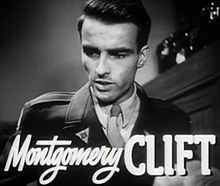
Clift has been honored with a star on the Hollywood Walk of Fame at 6104 Hollywood Boulevard and received four nominations for Academy Awards:
| Year | Film | Role | Notes |
|---|---|---|---|
| 1948 | The Search | Ralph 'Steve' Stevenson | Nominated — Academy Award for Best Actor |
| Red River | Matthew 'Matt' Garth | ||
| 1949 | The Heiress | Morris Townsend | |
| 1950 | The Big Lift | Sgt. 1st Class Danny MacCullough | |
| 1951 | A Place in the Sun | George Eastman | Nominated — Academy Award for Best Actor |
| 1953 | I Confess | Fr. Michael William Logan | Directed by Alfred Hitchcock |
| Terminal Station | Giovanni Doria | aka Indiscretion of an American Wife | |
| From Here to Eternity | Pvt. Robert E. Lee 'Prew' Prewitt | Nominated — Academy Award for Best Actor | |
| 1957 | Raintree County | John Wickliff Shawnessy | |
| "Operation Raintree" | Himself | Short subject | |
| 1958 | Lonelyhearts | Adam White | |
| The Young Lions | Noah Ackerman | ||
| 1959 | Suddenly, Last Summer | Dr. Cuckrowicz | |
| 1960 | Wild River | Chuck Glover | Directed by Elia Kazan |
| 1961 | The Misfits | Perce Howland | |
| 1961 | Judgment at Nuremberg | Rudolph Petersen | Nominated — Academy Award for Best Supporting Actor Nominated — BAFTA Award for Best Actor in a Leading Role Nominated — Golden Globe Award for Best Supporting Actor – Motion Picture |
| 1962 | Freud | Sigmund Freud | |
| 1966 | The Defector | Prof. James Bower |
"Es un novato de mucho talento -decía Elia Kazan-. Le gustan los coches de carreras, las camareras y los camareros. Dice que tú eres su ídolo."
"Estaba influido por Brando, pero se sentía más atraído por Monty -dice Bill Gunn, amigo de Monty y también buen amigo de Dean-. Jimmy descubría la fraccionada personalidad de Monty, su calidad dislocada. Brando era demasiado evidente, Monty tenía más clase."Según Gunn, se menospreciaba a Dean por imitar a Clift y Brando, pero según él, aquello era necesario en los años 50.
"Monty y Brando apadrinaron a toda una generación de actores: Al Pacino, Jack Nicholson, Dustin Hoffman, Robert de Niro. Monty era la primera estrella cinematográfica que parecía obsesionada, algo demencial. Se manifestaba una tremenda resistencia a la locura de los 50's , y Monty era inquietante."Tras un periplo autoestopista, el joven Dean llegó a Nueva York y después de meses de audición en audición, logró un trabajo regular en la televisión. Consiguió el teléfono de Montgomery Clift, que no figuraba en la guía, y le llamaba repetidamente.
"Principalmente para escuchar el sonido de mi voz -dijo Monty, que trataba de evitar tales llamadas-. Se limitaba a decirme:Luego supo que hacía lo mismo con Marlon Brando y que firmaba algunas de sus cartas como James Brando-Clift Dean (ver post). Cómo comprendo al bueno de Jimmy Dean; yo hubiera hecho lo mismo.
"Hola... aquí James Dean... ¿cómo estás?"
"¿Qué diablos esperaba que le dijese? ¡Hola, hombre! ¿Y tú, cómo estás?"
"Dean es extraño"No lo vio en cambio actuar en Broadway en El Inmoralista pero seguía su carrera y preguntaba por él a amigos mutuos. Los papeles de gemelos de Al este del edén, ofrecidos a Brando y Clift, recayeron en Dean y Dick Davalos. Durante su rodaje, Monty oyó hablar mucho de la producción, sobre todo de James Dean. Un amigo le dijo que no importaba su comportamiento brusco y misántropo, que se estaba entregando a su papel y que estaba realizando una interpretación increíblemente intensa de Cal (el papel que ofrecieron originariamente a Brando; a Clift le ofrecieron el de Aron, el hermano bueno).
-¿No es terrible lo sucedido a Jimmy Dean? Ha muerto en un accidente de automóvil en la 66 conduciendo su Porsche plateado. Se ha roto la nuca y se ha clavado el volante en el pecho.Monty se sentó en la cama echando a un lado las sábanas blancas de satén.
- La muerte de James Dean me causó una profunda impresión - le dijo Monty Clift a Bill Gunn-. En el momento de enterarme de ello vomité y aún no sé por qué.A los seis meses, él sufrió su aparatoso accidente de coche del que se salvó pero no se recuperó.



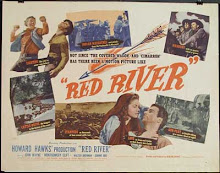
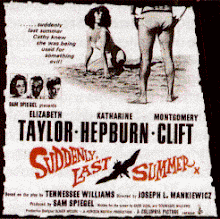




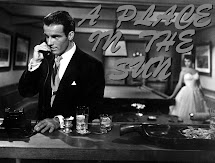2.jpg)
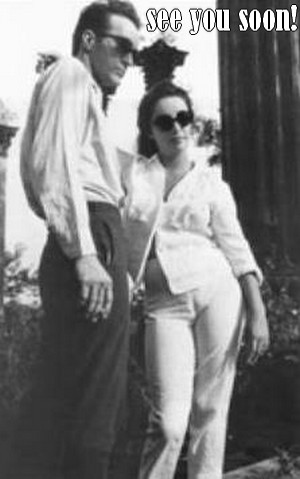

.jpg)

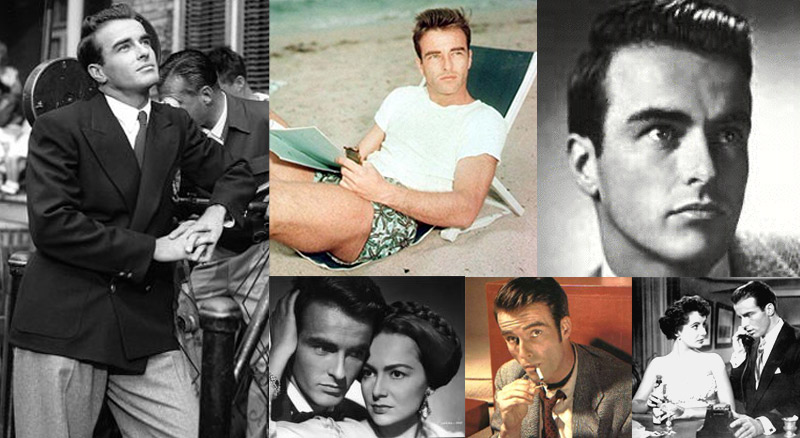
Would the average ff realize how few movies Elia Kazan actually made? (Of course, he also worked in theater, wrote novels, and there was that bizarre, mind-boggling mess over ‘naming names’ - though that didn’t seem to prevent him from getting movies made.)
The films he’s mostly known for are shown on tv with considerable frequency and, of course, are on DVD (also available, inexplicably, is his mind-numbing ‘turkey-shoot’ ‘The Arrangement’).
Then there are films like ‘Viva Zapata!’, for example, and ‘Wild River’ - and it is odd that they have to be hunted down.
While it’s true that Remick (agreed; looking lovely) and Van Fleet give two of the strongest performances, Clift does one of those ‘less is more’ turns, and his subtlety pays off. (I particularly like the ways he applies amusement and humor.)
Kazan is at his best here when handling the meatier sequences: (as noted), Van Fleet attempting to ‘buy the dog’; Clift being pressed to pay black laborers less than whites; the “You owe me four dollars.” scene between Clift and (remarkable in this scene) Albert Salmi. The sidebar love story is invested with the kind of microscopic detail that would reach plentiful fruition in Kazan’s ‘Splendor in the Grass’ the following year.
The opening documentary footage segues to what has a documentary feel throughout. Like John Huston in this sense, Kazan appears less interested in ‘performances’ than in creating something that feels like it’s happening now. (One reason, I think, why the work of both men has generally aged well.) Overall, ‘Wild River’ is a powerful film, and the final sequences are particularly moving.